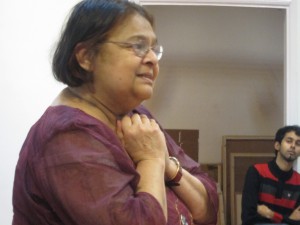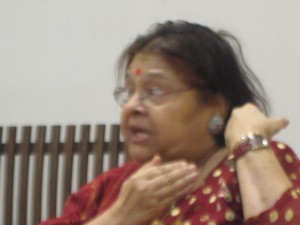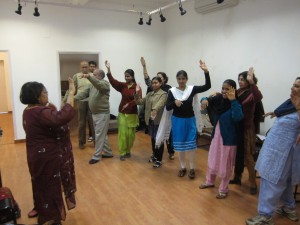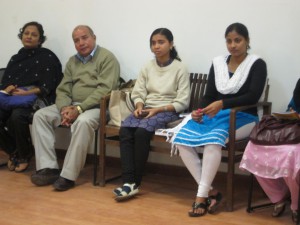“Things need not have happened to be true. Tales and adventures are the shadow-truths that will endure when mere facts are dust and ashes and forgotten.”
— Neil Gaiman
Stories transport, stories amuse, they teach, question, and they heal. They shape the way a generation grows, help mould minds and they are essentially the way we learn. Since there is a natural urge and a considerable ability in all human beings to narrate stories, we believe, that even the simplest endeavors of nurturing this impulse can bring about immense results in inspiring imagination and positive approach to living.
PeaceWorks-An initiative of The Seagull Foundation for the Arts with the active support of its volunteers has been implementing storytelling as a form of art through the ‘Share Stories Open Minds’ programme. Continuing our efforts to enrich our volunteers, we, once again organized yet another interesting, three-day storytelling workshop at the Seagull Foundation, on the 11th, 12th and the 16th of January, 2012. The workshop was conducted by Kusumika Chatterjee, an internationally acclaimed storyteller and teacher based in U.K. She has been working as a successful educator for the last four decades and has travelled around the world to teach people how to use storytelling as a tool; to provide essential education and learning. She has ideas and methodologies that open up an entire world of exciting adventures and events for the listeners: tales from far, tales of other parts of the world, tales that transport and tales that have the power to change minds and lives at large. Our enthusiastic volunteers with their active participation made the workshop a huge success. We saw shy, introvert volunteers opening up and bringing out the hidden storytellers in them to the forefront.
In the three day workshop the volunteers learnt that simple hand gestures and facial expression can animate a story and make it more interesting for the listener, they also learnt that small hand made props can create wonders when combined with artfully told stories! One of the volunteers chimed in that “it’s part of our classical dance repertoire, where abhinay or dramatization can breathe life into an age old story”. ‘Abhinay’ is, as Mrs. Chatterjee explained – “leading some one on”; and being the deft story teller, she lead amateur story-tellers and listeners into the fascinating world of performative narratives.
Volunteers shared their concerns with Kusumika Di. Some of them, after months of volunteering have inspired a trust in the children that leads to their sharing emotional burdens with the volunteers. Stories of physical and emotional abuse surface sometimes and the volunteers find it difficult to cope, not knowing how to handle it. Not being professional counselors, we discourage them from ‘counseling’ and yet they need to strike a balance between being sensitive and imparting just the ‘right’ nature of advice. Kusumika Di talked about the importance of ‘empathy’ under such circumstances and advised that that where the problem seemed acute it should be shared with the centre in charge and further taken to relevant experts.
The other concern the volunteers have been grappling with is the children’s constant demand for ghost stories. The main thrust of our programme is intercultural dialogue. Kusumika Di confessed that pleasing the children and also addressing the inherent need of the programme is difficult and must be done carefully. For instance, instead of telling typical ghost stories one could use the myths of spirits that exist in the oral repertoire of forest dwellers across the world. These myths could then be maneuvered and used as a vehicle to instill a love for nature . Instead of ghosts, spirits of animal and plants could be made to linger in the minds of these children; that they may be encouraged to preserve our nature and learn to love all. Some volunteers also suggested that “bhoot” or “ghost” is nothing but a manifestation of the past. In this manner not only will they learn something new but their interest will stay with the story teller.
Kusumika Di also demonstrated the marvelous capacity of music in taking a story telling session to a much higher level. Music can create moods, music can convey feelings, music engrosses and enhances the impact of the story telling when used appropriately.
The three day workshop with Kusumika Di was an inspiration for our volunteers and we look forward to many more sessions with her.
“If you are a dreamer, come in. If you are a dreamer, a wisher, a liar, a hoper, a prayer, a magic-bean-buyer. If you’re a pretender, come sit by my fire, for we have some flax-golden tales to spin. Come in! Come in!”
(Shel Silverstein)




